How To Add Glow Effect In Clip Studio Paint
Today we're going to be talking about lighting our digital paintings. For this tutorial, I'll be using Clip Studio Paint on the iPad Pro, but it applies to any software that allows you lot to assign blending modes to your layers.
Color Studies
The power to add together light to a painting during or at the end of your drawing process is something to celebrate! You can't do this with traditional media, and information technology allows you to experiment with and requite additional focus within your art during the production stage.
Traditionally, artists would pigment thumbnail-sized painting color studies to determine the tone or value range of their painting before diving into a full-sized final piece. With digital fine art, nosotros can brand those decisions on the fly or later we're done laying downwards the bulk of the piece.
That said, this doesn't accept the place of planning out a color palette. Aim for a harmonious palette with complementary color saturations that won't compete with each other and so use the post-obit techniques to throw your images over the superlative with artistic lighting.
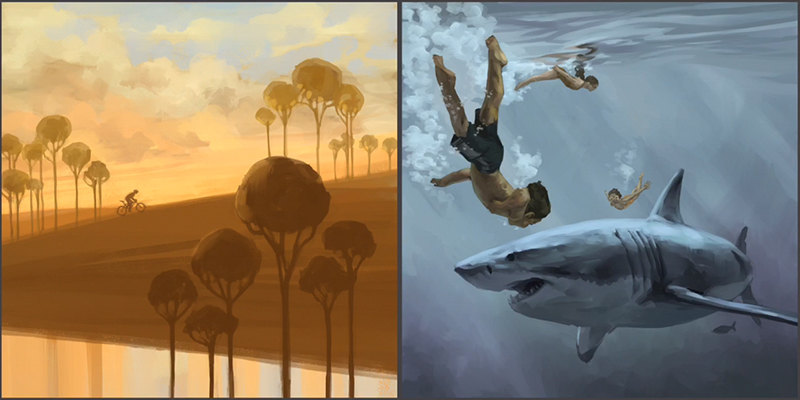
Let's swoop in! I'll be using two paintings equally examples. I is stylized, and the other is more traditional. I chose these because I painted both with a express gamut, a limited range of colour saturation, then they're not overly contrasting. One time nosotros add lighting effects, the contrast and saturation will increase. Staying within a express contrast range allows you to maximize the amount of detail retained when ramping up highlights with blending modes. We'll be using the Add Glow blending style. In Photoshop, it's called "linear dodge." This mode affects the prototype in similar means.
Blending Modes: What does Add Glow practise?
To prove what Add Glow does, first I make 2 layers and fill the lower layer with a brown colored rectangle. On the upper layer, I paint a swatch over it. Since the upper layer set up to normal, the swatch I made blends right in with the layer underneath. Setting the layer to Add Glow gives us a effect that's much lighter than the original color.
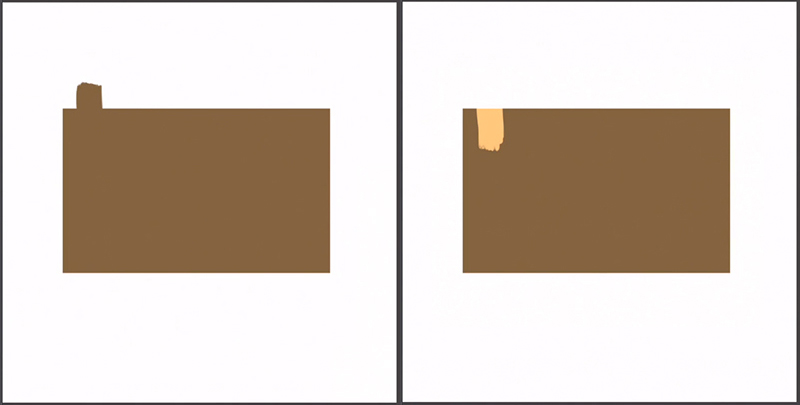
Agreement what's happening with these colors will assist u.s.a. finer add and control light in our paintings. I use the eyedropper to hover over each colour and see that the saturation of the original color and the resulting color is the same, but the value of the color has profoundly increased from l to 100. What happens when nosotros add swatches raised in value? As the value of the color we are painting with increases, the blending mode results get brighter. As we approach absolute white, you lot can see that we tin can get pretty bright, but there is still a little bit of tint or saturation to the color. That'south because our saturation is still at l%. As soon equally we bring our saturation down to zero, nosotros'll become absolute white.
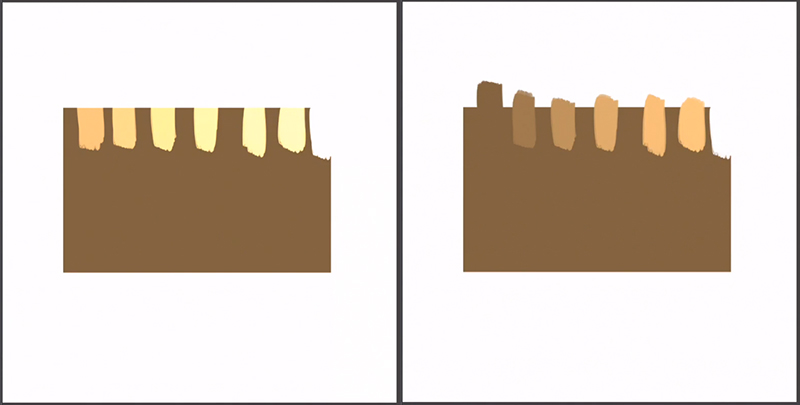
The same thing is true as we go down on the color value range and start adding blackness instead of white. As we approach a completely black value, the effect of the blending manner disappears. Switching the layer to normal shows that we're painting with black but the result of the blending mode is that it doesn't take whatever effect over the layers underneath it.
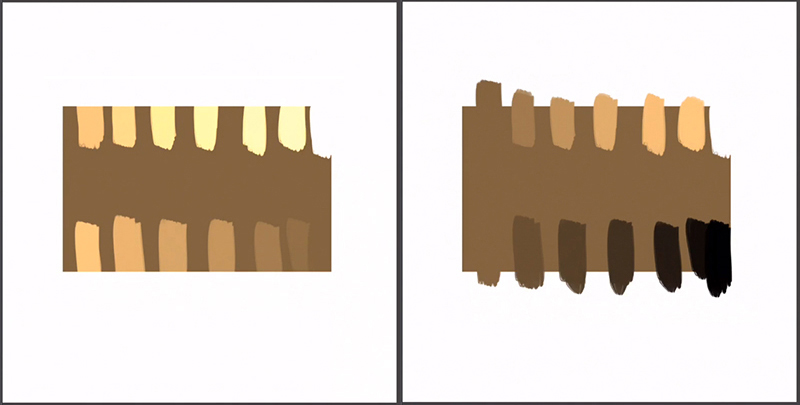
Why use Blending Modes?
Then why use a blending mode instead of the traditional arroyo of shifting the paint color? The value of blending modes is that, once nosotros take a bunch of marks on our canvas, nosotros can use the same color to affect multiple values and hues underneath it. For example, I brand some other layer and set up it to Add Glow. Then, using the original dark-brown color, I paint over the swatches. Doing this results in varying amounts of light with one color because the blending manner is affecting all of the swatches underneath it.
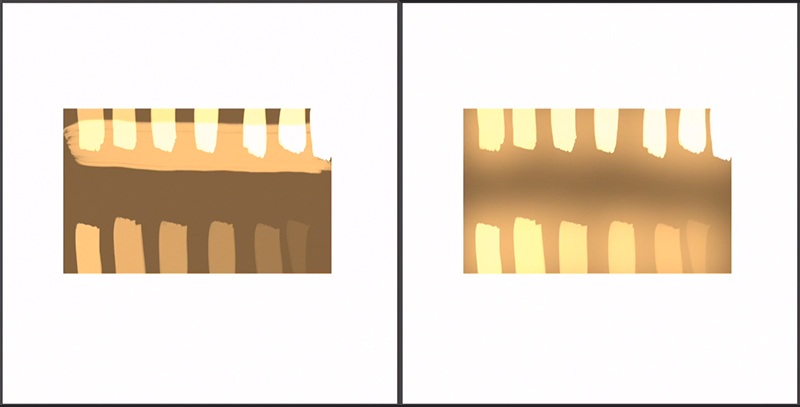
Furthermore, using a soft airbrush creates varying degrees of calorie-free or glow; hence, the proper noun of the mode, Add Glow. It's a trivial different than another blending style chosen Screen. With Screen, we don't get the saturation that we get with Add Glow/Linear Dodge. Yous can see in the beneath image that with Add Glow, specifically around the edges of our paint strokes, there'south a variance between the densest part of the paint and where the castor falls off which makes the strokes seem a little bit more vivid and lit.
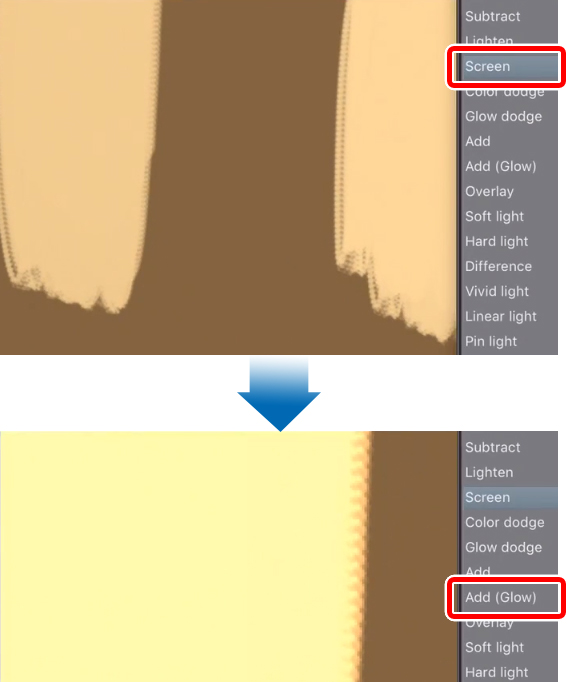
Using Add Glow as a Light Source
At present that we know what the Add Glow blending mode does allow'southward add together it to one of the example paintings. When I add together glow, I call up nearly it equally a lite source. I consider directional light, such equally the light being bandage on the trees and surround. The layer I'm working on is behind my foreground copse, so anything I add volition just impact everything underneath my foreground layer. I prepare the layer to Add together Glow, choice a common color from my mid-ground element, and I lay in some colour using the soft airbrush.
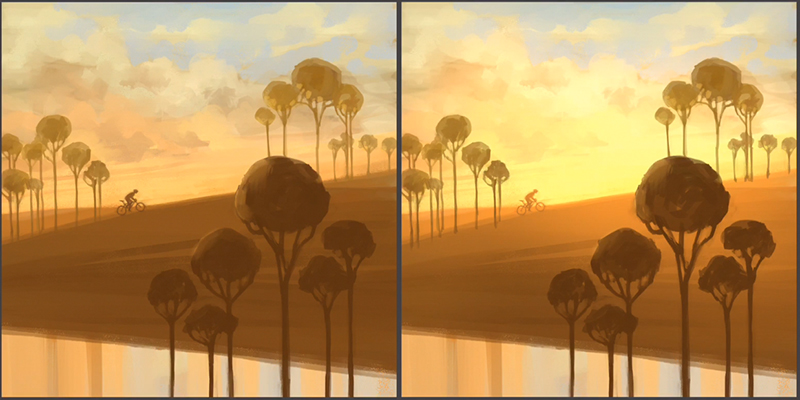
I'k essentially just painting in low-cal effectually where the focus is going to be. In the above image, I put the sunday correct in the heart. In the image below, I lit up the right side every bit if the guy is riding into the sunset. We can modify the story in the painting based on our lighting scheme.
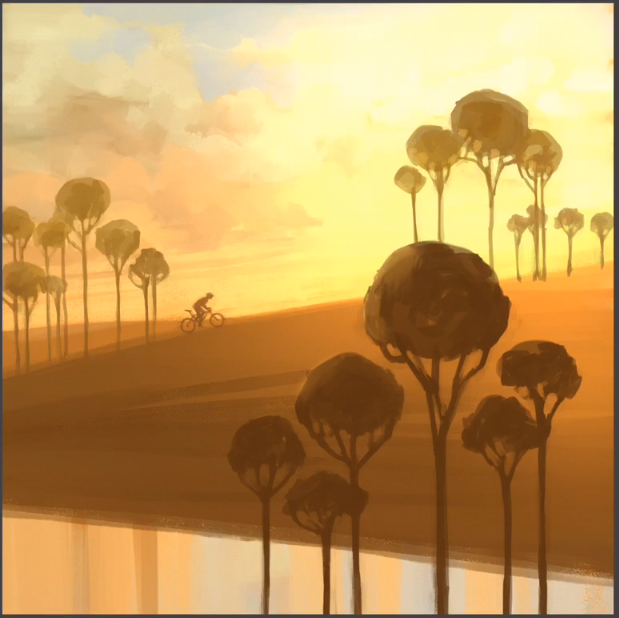
Painting a piffling more, you'll find that the paradigm is only going to go then bright because the value of the color that I'm painting with simply has a sure corporeality of whiteness to it which dictates the current value. As well, the more than saturated a color is, the less we're approaching a pure white.
Let's try with a darker mid-tone color, and so we don't become too bright too soon. I go in with the soft airbrush and paint over the clouds. The nice thing about this airbrush is that nosotros get some color gradation when we pigment. To imply the dominicus, I raise the value just a little bit to desaturate it, so there'south a brilliant sunset on the horizon. If I observe the color getting too milky, I'll switch from my drawing color to the transparent color and pull a little bit out.
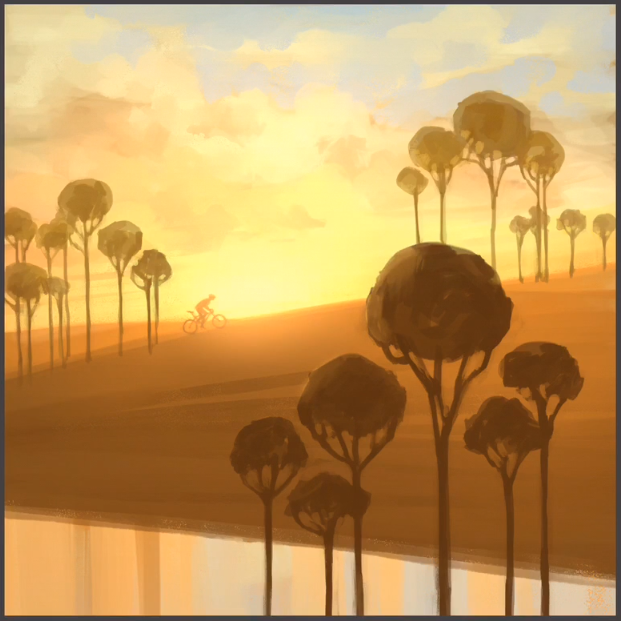
Vignetting with Shadows
Now, let'southward add vignetting with some shadow. I like to do this with curves, merely there are lots of ways to do it. I add an adjustment layer from the layers palette > new correction layer > tone curve and make a quick adjustment in that location, darkening the painting so I tin can go a sense of what'due south happening with it. Then fifty select the white area on the layer palette and articulate information technology and then that it's non affecting anything, select my soft airbrush over again, zoom out, and paint in the fiddling bit around the edges, giving the image a ring effectually the edge. In the same style that the light is giving us a little focus, petty curves can also assistance accentuate where nosotros want the viewer to look. Playing around with curves can shift the colors dramatically equally well.
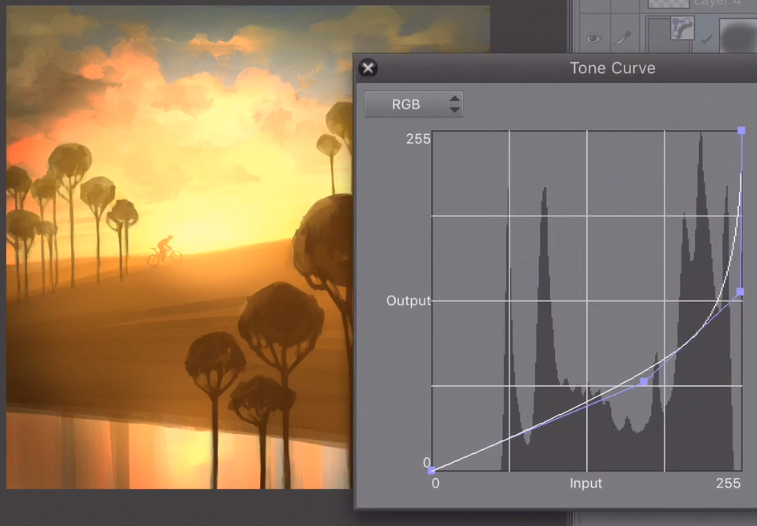
Before and Afterwards Blending Modes
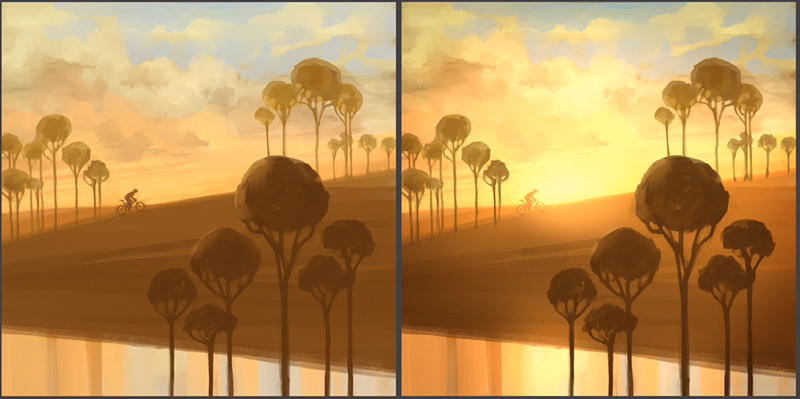
Adding in Colour
Permit'due south endeavor one more blending way technique with this side by side illustration No Worries. Later adding a glow layer and playing with curves similar in the previous epitome, this is the outcome:
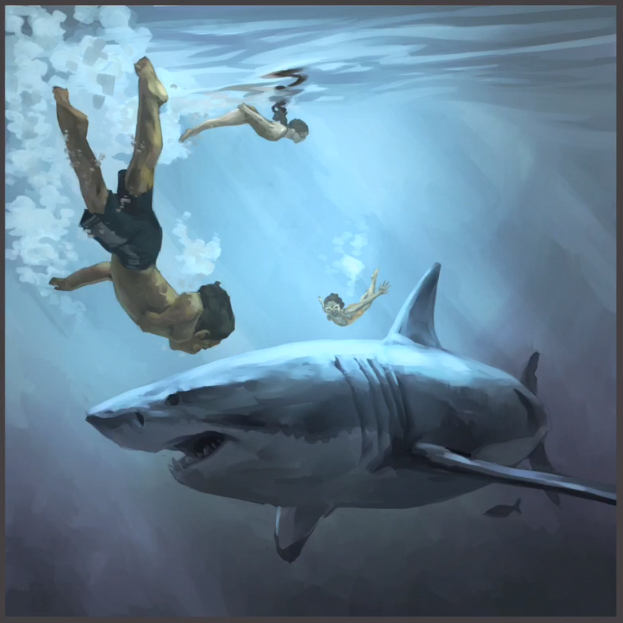
Information technology's then easy to go overboard when calculation glow. One of the cute things well-nigh this limited color palette is the grays, so I wanted to maintain those. Adding too much of glow, however, will over-saturated the paradigm. In my stance, this tin brand information technology await less elegant.
An boosted technique is to play effectually with the color remainder and give ourselves some overall gradient shifts. For example, I want to experiment with adding some green, so I take hold of a color balance layer, adjust it, and clear it.
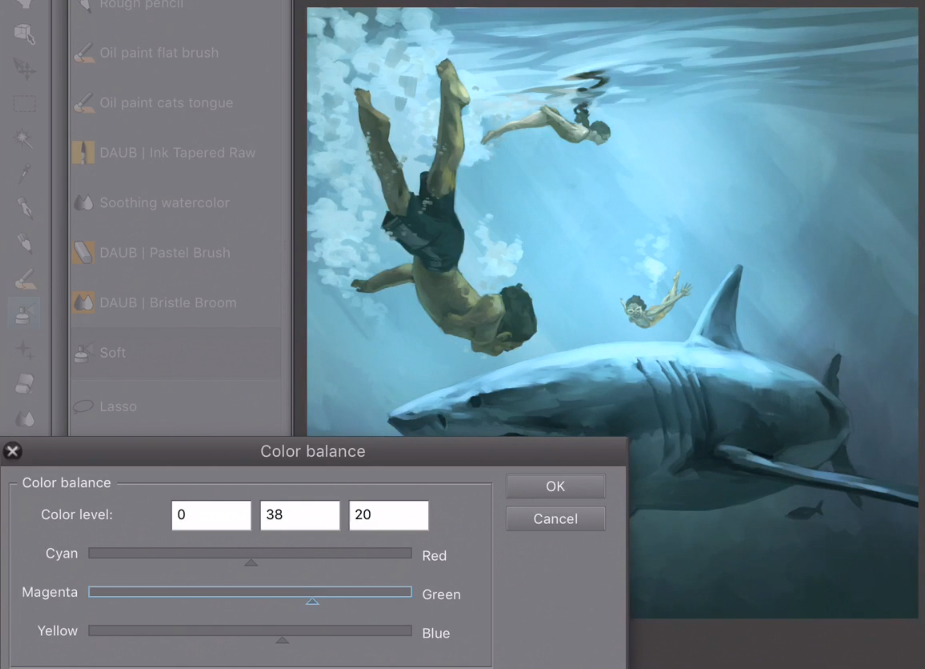
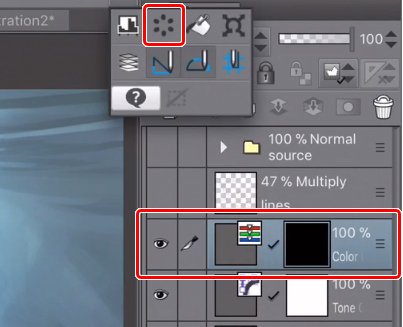
Next, I utilize the soft airbrush again to paint where I want the green to seep through. I want to try to avoid overly saturating or calculation as well much contrast in my piece and so that I retain the basic original feeling of how I painted it.
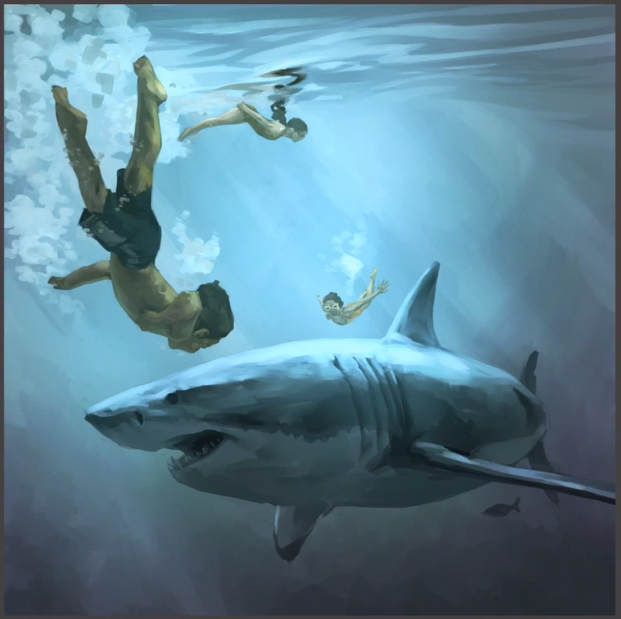
So there y'all accept it. I hope you lot learned a footling scrap about calculation glow to your images in whatever software y'all use. Just make sure that you lot maintain command of your determination-making procedure and most importantly, have fun!
Nigh Reuben Lara
Reuben Lara is a traditionally trained artist who primarily uses Prune Studio Pigment and Adobe Photoshop and provides free preparation for beginner and intermediate artists through video tutorials. He reviews basic tools that are affordable and accessible and teaches production-proven techniques and methods that he'southward been using for over 20 years in the design and analogy industry. He seeks to assist artists learn how to bask painting in the digital workspace overcome technical hurdles so they can offset having fun when creating art.
How To Add Glow Effect In Clip Studio Paint,
Source: https://www.clipstudio.net/how-to-draw/archives/156055
Posted by: munntrown1991.blogspot.com


0 Response to "How To Add Glow Effect In Clip Studio Paint"
Post a Comment